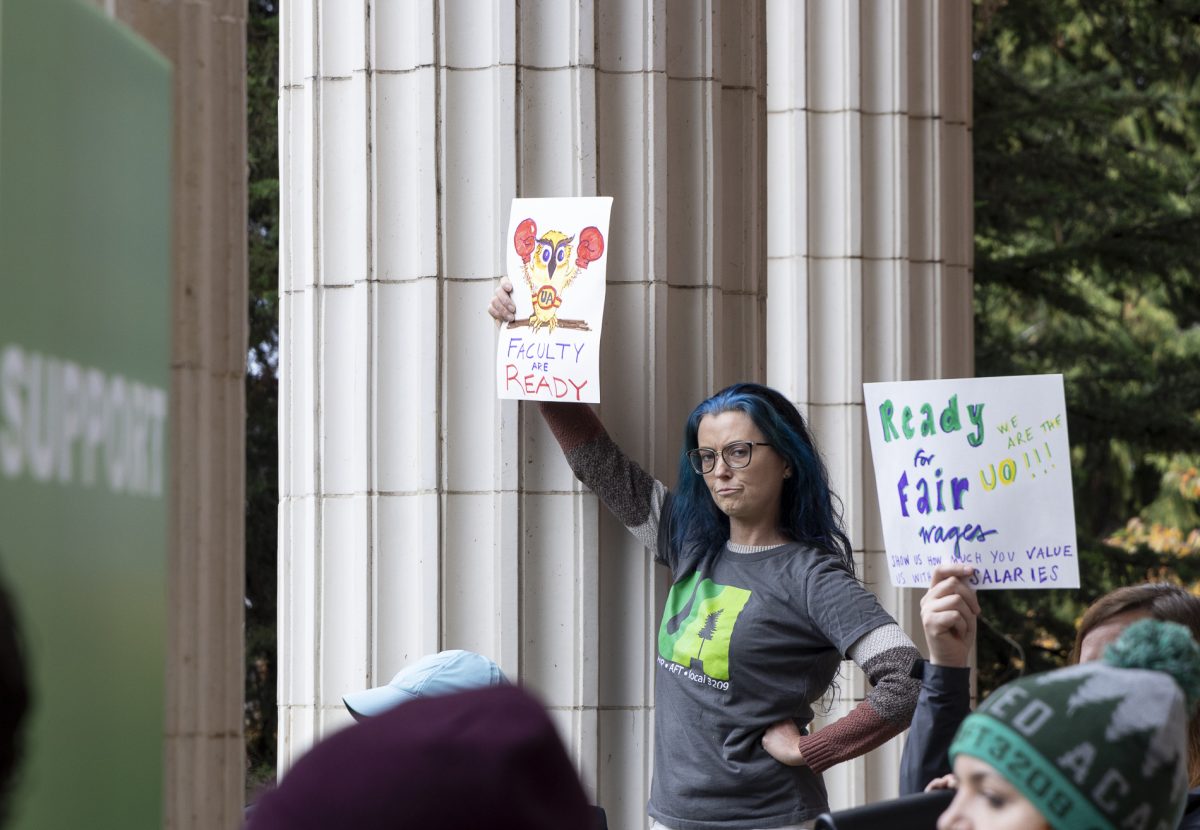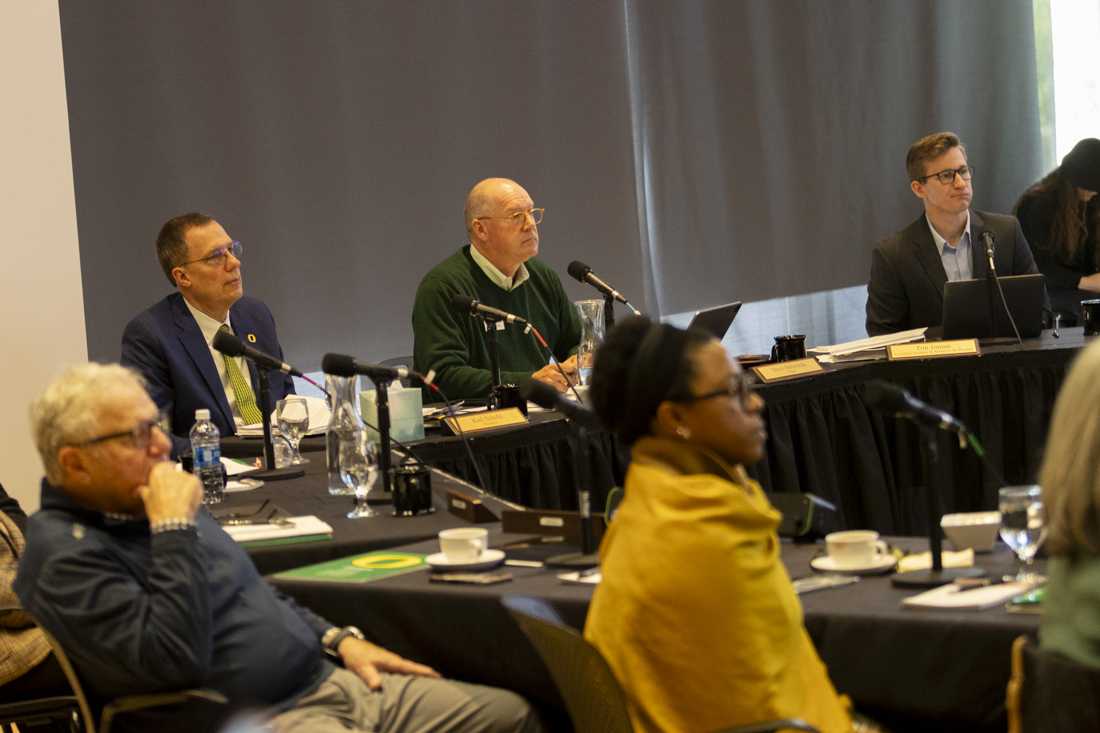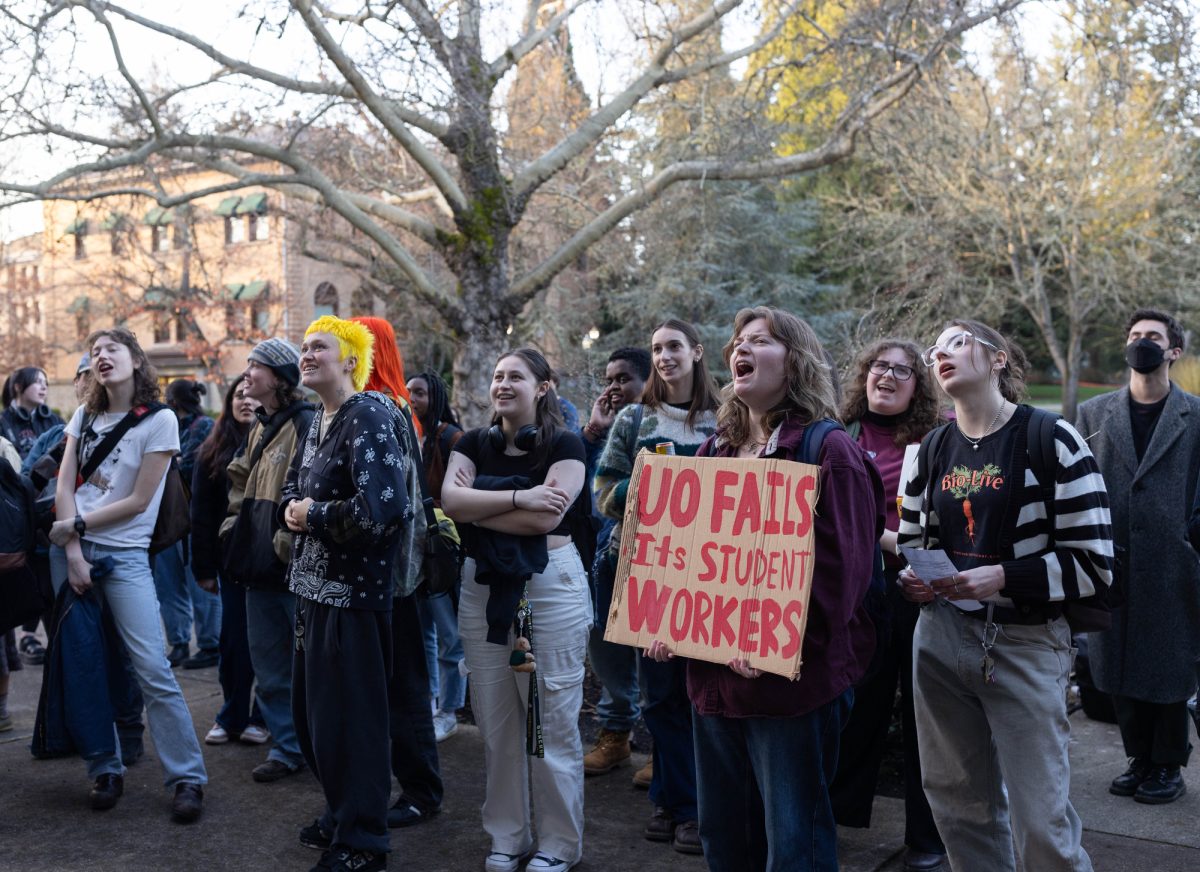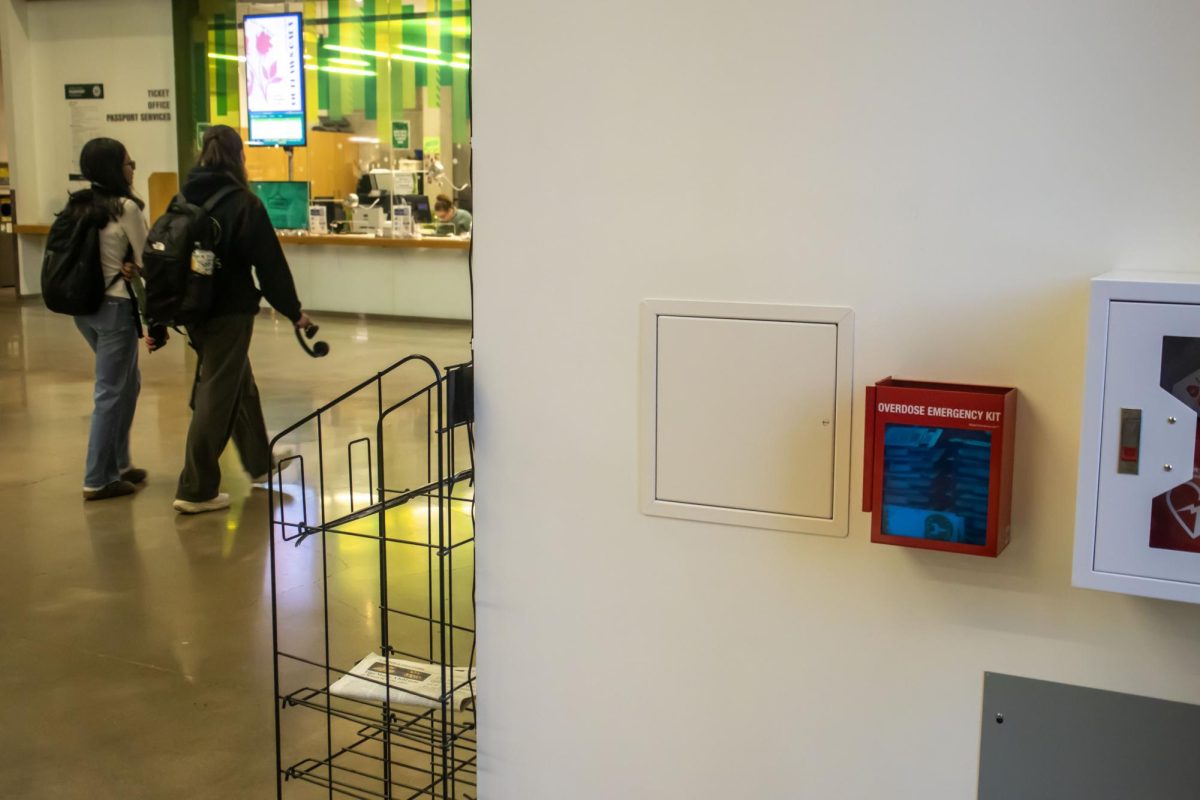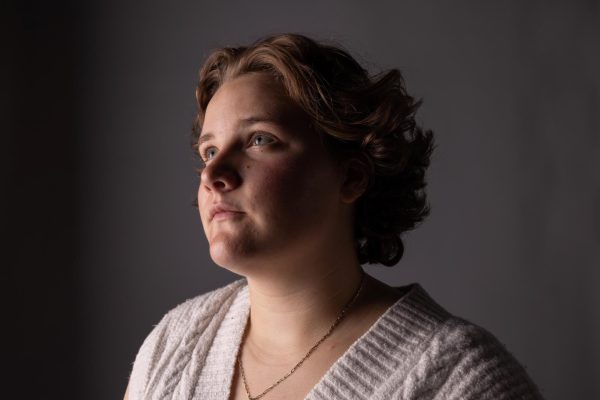On August 21, the UO Campus Labor Council, which consists of the University of Oregon’s Graduate Teaching Fellows Federation, United Academics, Service Employees International Union and Student Workers Union, released a joint statement addressing its concerns on UO’s lack of procedure to protect air quality on campus.
Amidst the recent heat waves and wildfires in Eugene, the air quality on campus was deemed unsafe and reached dangerous levels of over 250 AQI on August 15. Although university staff, graduate student employees and classified workers were mainly indoors, they were not given information on which buildings had proper ventilation systems, according to the joint statement.
Due to this lack of information, many employees and workers were left in buildings with unsafe air quality conditions and were unsure if they were able to leave campus or not, according to the statement.
“Even with air conditioning, the buildings are still really warm and it’s hard and uncomfortable to be in there,” GTFF Vice President for External Relations Emily Beatty said. “But especially when the air quality was over 250 AQI and that air starts entering the buildings, it doesn’t matter whether you’re sensitive to air quality or not. It affects the kind of work you’re able to do regardless.”
On August 15, UO released a statement on “Around the O” in which it addressed the high temperatures and poor air quality on campus, as well as referred people to UO’s Alerts and AirNow website for updates.
According to Beatty, GTFF felt frustrated at the statement that UO released because it did not give a strategy for workers and employees to rely on, but rather just stated the cause.
“The university needs to take into consideration in its communication that people tend to skim those emails anyways,” Beatty said. “If there’s something really important and an emergency that people need to be notified about, that needs to get its own individual message rather than being fit in with a bunch of other things.”
UA President and Senior Economics Instructor Mike Urbancic gave a perspective from the faculty and UA and how they were affected by high temperatures and poor air quality.
“Faculty works in all sorts of different buildings on campus,” Urbancic said. “They’re working in offices or classrooms or labs in different buildings, and because of the nature of these buildings, they have different infrastructure and different ventilation, so there’s some variance in how well that works for faculty.”
Urbancic’s office is in Prince Lucien Campbell Hall where there is no central air conditioning or ventilation. Urbancic stated that when there are wildfires and high temperatures, his office does in fact become very smoky and uninhabitable.
According to Beatty and Urbancic, the Campus Labor Council is looking for the university to respond to their joint statement with solutions that involve more “on-the-ground guidance.”
What “on-the-ground guidance” means is more specific guidelines, tasks and protocols that the university shares and teaches so people would know exactly what to do in case of emergencies like these, according to Urbancic.
The statement released by UO said the university typically remains open during heat advisories and low air quality, and that changes to class schedules or work are not typical during those conditions.
“We’re glad that the university has these alerts,” Urbancic said. “But we’d like to have more specific guidelines so that even before the university has to alert us about emergency situations, like poor air quality, they are already planning what that means for their work and their day.”
The incoming GTFF President delivers a speech in front of rally attendees. Members of Oregon’s Graduate Workers Union rallied with community members outside of McKenzie Hall ahead of their next bargaining session on June 2, 2023. (Molly McPherson/Emerald)






